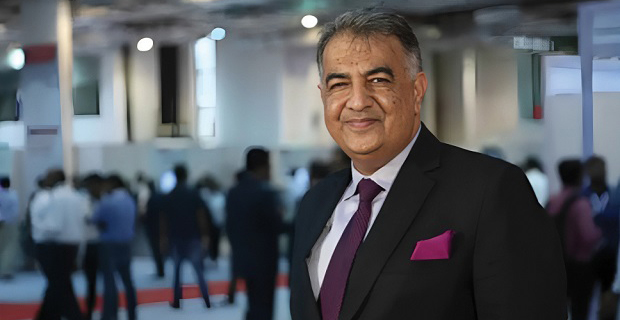BIG PLANS FOR ORACLE’S HEALTHCARE IN INDIA
New Delhi: As Cloud major Oracle makes significant strides in the healthcare sector, Shailender Kumar, senior vice-president and regional managing director, Oracle India and NetSuite JAPAC, has said he has “big plans” to get the company’s healthcare arm Cerner and its solutions to the country. Cerner, a global supplier of health information technology (HIT) services, devices and hardware, was acquired by Oracle for $28 billion last year.
Speaking on the sidelines of the recently-concluded Oracle CloudWorks in Las Vegas in the US, Kumar told IANS: “(Oracle founder) Larry Ellison’s main focus is to get healthcare everywhere and Cerner was a $28 billion acquisition made a year ago. I have a very big plan to get Cerner to India.”
He said that although healthtech has been making a distinct difference in India, “we need something like Cerner which already has 70 per cent of the US market”. “The employee has the records; the patient management system can make a big difference,” Kumar added. When asked if such a service could work in places like AIIMS, the top executive quipped: “No one thought that UPI could be successful in India.
“It will be very successful in AIIMS. The usage of digital services in tier 2 and Tier 3 cities is the same as tier 1. For companies like us, the most important factor is how fast we can cater to the needs of our customers. This is one thing we will get to India as fast as possible and make it absolutely successful,” he told IANS
At the Oracle CloudWorks event, Ellison made some announcements and one of the key ones was ‘MultiCloud’ - a collaboration between Microsoft Cloud and Oracle Cloud. On this, Kumar told IANS that Oracle’s top 10 big customers in India, including HDFC, ICICI, Reliance and Airtel, have a very big presence on Oracle Cloud as well as other hyperscalers.
“From a multi-Cloud standpoint, Oracle has really proven to whatever we have said, we have delivered, and I think this is just the starting point. I don’t see customers putting pressure on other hyperscalers demanding similar kinds of services. “The overall landscape in the next few years may change because of a multi-Cloud environment,” Kumar added. He said that many organisations have approached Oracle, saying that they have started their digital journey but want to accelerate to become completely digital.
“New additions to the already established transformation like Generative AI will keep coming every quarter or every year. You will see more things in the near future,” Kumar noted. On Oracle Cloud being open-source, he gave the example of the ‘Digital Infrastructure for Knowledge Sharing’ (DIKSHA) project in India.
The Education Ministry had chosen Oracle Cloud Infrastructure (OCI) to modernise the country’s national education technology platform via DIKSHA, which is more accessible and would also lower its IT costs. The platform supports 1.48 million schools across all of India’s 35 states and union territories and is available in 36 Indian languages.
“The complete migration on the OCI happened over a period of three months. And it is running very smoothly now,” Kumar said. On similar lines, he gave another example of the online education platform, Impartus. “They were using a different hyperscaler and we promised them by saying two things -- Oracle cloud will give them 30 per cent savings and at least 20 per cent better performance. They said show it to us and within 15 days, they gave us the order.”
Today, Oracle has a significant presence across industries, whether it is banking, telecommunications, public sector, manufacturing and startups in the country. “Our story is one that is very complete and unified, where you talk about infrastructure, platform or software as a service. It’s unified, combined and no other organisation can offer a similar kind of story,” said Kumar.











Comments.